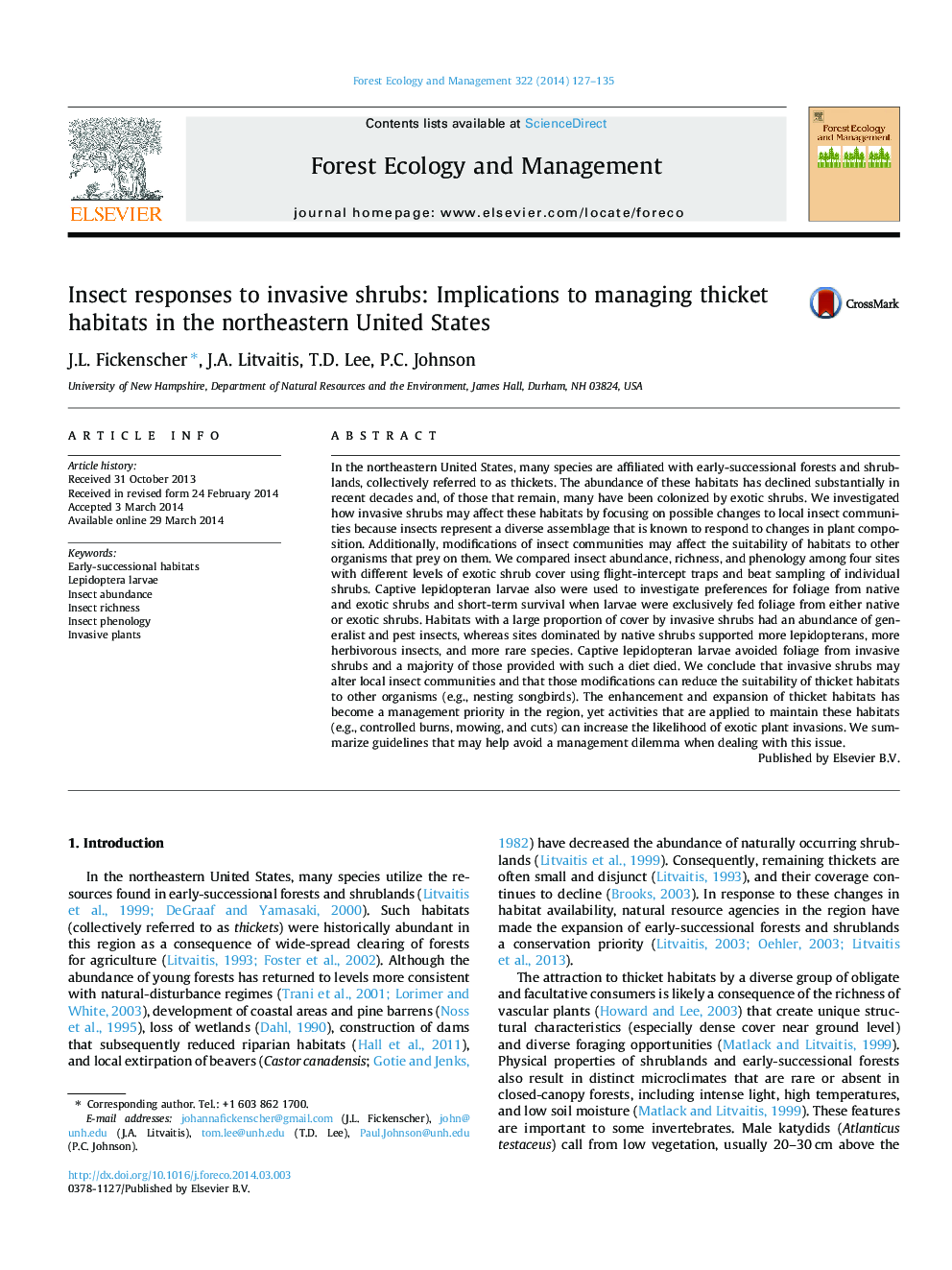| کد مقاله | کد نشریه | سال انتشار | مقاله انگلیسی | نسخه تمام متن |
|---|---|---|---|---|
| 86765 | 159210 | 2014 | 9 صفحه PDF | دانلود رایگان |
• Insect abundance and diversity is lower on invasive shrubs.
• Areas of invasive plants negatively impact insect abundance and diversity.
• Habitats with invasive plants tend to favor generalist insects and pest species.
• Native plants support more lepidopterans, herbivorous insects, and rare species.
• Lepidopteran larvae avoid invasive shrub foliage in food-choice experiments.
In the northeastern United States, many species are affiliated with early-successional forests and shrublands, collectively referred to as thickets. The abundance of these habitats has declined substantially in recent decades and, of those that remain, many have been colonized by exotic shrubs. We investigated how invasive shrubs may affect these habitats by focusing on possible changes to local insect communities because insects represent a diverse assemblage that is known to respond to changes in plant composition. Additionally, modifications of insect communities may affect the suitability of habitats to other organisms that prey on them. We compared insect abundance, richness, and phenology among four sites with different levels of exotic shrub cover using flight-intercept traps and beat sampling of individual shrubs. Captive lepidopteran larvae also were used to investigate preferences for foliage from native and exotic shrubs and short-term survival when larvae were exclusively fed foliage from either native or exotic shrubs. Habitats with a large proportion of cover by invasive shrubs had an abundance of generalist and pest insects, whereas sites dominated by native shrubs supported more lepidopterans, more herbivorous insects, and more rare species. Captive lepidopteran larvae avoided foliage from invasive shrubs and a majority of those provided with such a diet died. We conclude that invasive shrubs may alter local insect communities and that those modifications can reduce the suitability of thicket habitats to other organisms (e.g., nesting songbirds). The enhancement and expansion of thicket habitats has become a management priority in the region, yet activities that are applied to maintain these habitats (e.g., controlled burns, mowing, and cuts) can increase the likelihood of exotic plant invasions. We summarize guidelines that may help avoid a management dilemma when dealing with this issue.
Journal: Forest Ecology and Management - Volume 322, 15 June 2014, Pages 127–135
